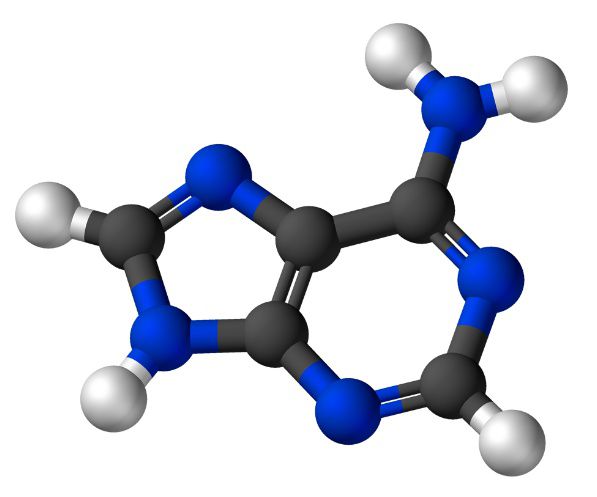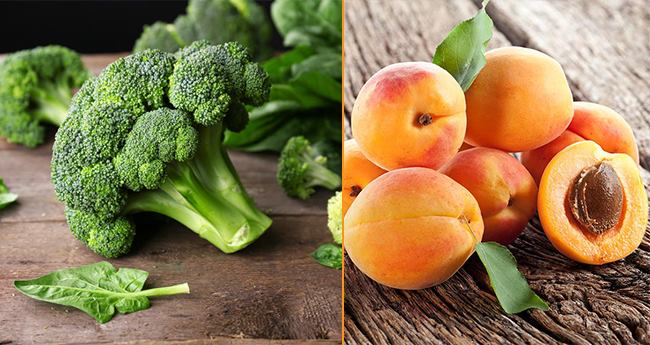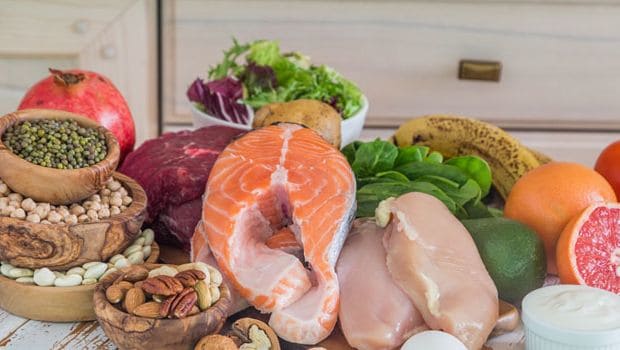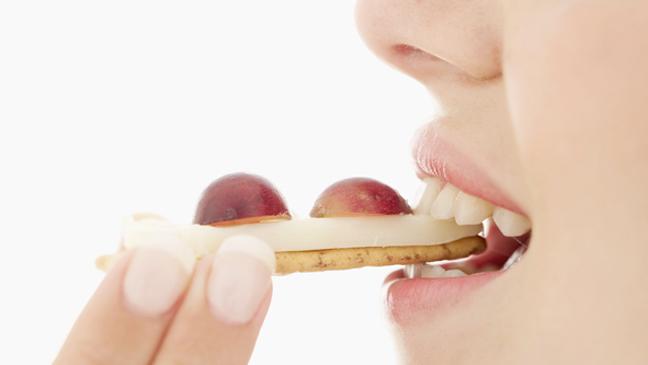In the article, we consider a table of purine content in food.
Purine is a widely distributed substance in nature that is part of the cell structure of all organisms on the planet. It is this structural element that serves as the basis for building the nucleic acids necessary for life, as well as a number of all kinds of enzymes. Purine normalizes energy metabolism in the human body, improves the absorption of vitamins and macronutrients, and, in addition, the occurrence of metabolic failure is prevented and a host of other biologically important functions are performed.

Few people think about the content of purines (uric acid) in products.
Purin and its features
At the time of cell death, destruction of purine is observed, which is accompanied by the active production of uric acid. This process is natural for the human body, thanks to it significant benefits are brought. Uric acid is considered a great antioxidant and a component that has a beneficial effect on the state of blood vessels. True, the beneficial properties of this compound are manifested only in situations where its concentration in tissues and organs does not exceed permissible norms.
Everyone should have a list of high purine foods.
The consequences of an excess of uric acid in the body
Normally, in one liter of adult blood should contain:
- From 34 to 70 milligrams of uric acid in men.
- From 24 to 57 milligrams in women.
However, in case of abuse of purine-containing food or in case of a violation in the kidneys, the values of these figures may exceed the established limit. Excessive accumulation of uric acid, which is formed during the breakdown of purine in the tendons, blood, joints and other organs of the human body, leads to the development of rheumatic pathologies, which is called gout.
Unbearable joint pain
The onset of this disease can be accompanied by the appearance of intolerable pains in the affected joint (usually in the area of the big toe), swelling of the surrounding tissues and redness of the skin over the focus of the pathology. In the absence of therapy, new joints are additionally involved in pathological processes along with internal organs and tissues.

The content of purines in foodstuffs will be described below. In the meantime, find out what is the norm.
Purine intake
The main method for the prevention of gout is strict control over the intake of purine. According to the established norm, the daily dosage of this compound cannot exceed 700 milligrams. Moreover, plant food should be the key source of this substance.
This requirement has a clear scientific basis. It is proved that excessive ingestion of plant foods that are rich in purine is not a factor contributing to the occurrence of gout. At the same time, excessive consumption of meat products dramatically increases the risks of this disease.
Dieting
Against the background of excessive accumulation of uric acid in the body and the development of gout, patients are prescribed a diet that includes the exclusion of foods from the diet, which are a rich source of purine. The daily norm of such a compound is reduced from 700 to 150 milligrams.
What foods have purine?
A table of purine content in food will help to understand this issue.
To control the intake of purine in your body, you need to master the information about its content in foods. It has been proven that in the highest concentrations this compound is present in cells dividing at an increased rate (namely, in baker's yeast), and, in addition, in meat offal. Consider which foods with purines we consume:
- Eating meat from young animals.
- Food mushroom, meat, vegetable and fish broths.
- Jellied meat along with all kinds of jellied dishes.
- The use of sauces and gravy prepared on the basis of meat broth.
- Foods high in purines are dishes made from meat offal.
- The use of smoked meat in the form of sausages, wings, ham and so on.
- Eating caviar and oily fish (including canned food) along with salted and spicy cheeses with low fat content.
- Drinking beverages that stimulate the nervous system (we are talking about cocoa, saturated black tea, coffee and so on).
- Any kind of animal fat.
- Eating legumes in the form of peas, soybeans, lentils, beans and so on.
- Products that are based on grapes. It's about wine, raisins and more.

Table of purine content in food
More detailed information on the purine content in nutritious foods is presented in the table below.
Grocery list | Purine content in milligrams per 100 grams |
Chicken liver | 239 |
Ground coffee | 1223 |
Sprats | 214 |
Fresh yeast | 311 |
Dry yeast | 751 |
Beef liver | 219 |
Cocoa powder | 1797 |
Canned Sardines in Oil | 137 |
Calf liver | 174 |
Pollock | 157 |
Herring roe | 178 |
Beef lung | 157 |
Mussels | 142 |
Black tea | 2756 |
Foods high in purines are not always healthy.
High and low levels of purine and uric acid
When cells die, purines are destroyed. And they do not just collapse, but also create uric acid. This is a normal process, even beneficial for the body. The advantage of such an acid is that, acting as an antioxidant, in normal amounts it protects the blood vessels in the human body. According to medical standards, the amount of this acid in men should be from 3.4 to 7.0 milligrams per 100 milliliters of blood, and in women from 2.4 to 5.7.
However, the amount of this acid directly in the blood and other parts of the body for various reasons may be too high. The main cause is kidney problems. Considering that people’s kidneys are responsible for maintaining this level in a balanced form, their ill health leads to excessive accumulation of acid in different parts of the body, for example, in the tendons, the kidneys themselves, the joints and other organs. This accumulation of acid crystals is called gouty arthritis, or simply gout. And with this problem, nutritionists advise reducing the intake of products containing purine.

A diet based on products with a low purine content is often prescribed in the treatment of obesity and kidney stones and the bladder, because the excessive processes of accumulation of this acid in the tissues of the human body also become the causes of their occurrence.
Purines: effects on the body
The purine content in products affects the human body as follows:
- Purines are converted to uric acid in the human body.
- A high concentration of uric acid increases the risk of crystals in the urinary tract and joints. In such cases, purine-minimized nutrition can be beneficial.
- The formation of uric acid in the body occurs subject to a healthy metabolism, which is considered normal. In the blood, acid acts as an antioxidant, preventing vascular damage.
- Under some conditions, the level of this acid in the human body, especially in the blood, may become too high. The kidneys act as the body that is responsible for the balanced concentration of uric acid in the human body.
- Any deviation in the functioning of the kidneys that a person does not yet know about can increase the concentration of this acid.
- The accumulation of this acid leads to the formation of its crystals, deposited in the tendons, kidneys, joints and other organs.
This condition is called gouty arthritis or the more commonly known term gout.
Regulation Methods
A daily average diet for healthy people should contain between 600 and 1000 milligrams of purines. Recent studies have shown that the effects of plant purine on the risks of gout and kidney stones are very different from those of animal purines. The latter, moreover, are heterogeneous. The fact is that purines from meat and fish act in a completely different way than the same element from dairy products.
The list of products containing purines was presented above.
Meat and fish purines greatly increase the risks of gout. As for purines from vegetables, they have almost no effect on this. Dairy products can also increase this risk, but only slightly.

Dosage reduction
In case of gout, especially in the presence of exacerbation or in severe cases, nutritionists advise reducing the daily dosage of purines to 150 milligrams. To understand what it is all about, you need to know that three servings of some foods can contain up to 900 milligrams of purines. What kind of food do purines contain to a greater extent than necessary? These nutrients include anchovies along with herring, kidneys, liver, mackerel, meat extracts, minced meat and mussels.
Diets low in purines in foods are often prescribed for the treatment of obesity and kidney stones.
Purines and Human Health
Purines are necessarily needed by the human body. The fact is that uric acid, which is formed during the breakdown of purines, is also essential for health, however, only in certain and limited quantities. It is worth noting that under certain conditions, the metabolic processes of purines in the body are disrupted. So far, research in this area is not convincing, but many practitioners and nutritionists suggest screening for purines in children and even infants in case of some health problems.
Such problems include anemia along with a lack of normal weight, height, development, cerebral palsy and autism in combination with deafness, epilepsy, a tendency to recurrent infections, and an inability to walk or speak. It is not possible to completely eliminate products that contain purines. But in the presence of any kidney disease, it is necessary to reduce their use in order to facilitate the work of this body, reducing the risks of arthritis and gout.

High Purine Food Recommendations
A competent approach in every family to the preparation of products that contain purine makes it possible to avoid problems that are caused by excessive accumulation of uric acid in the organs. It is in connection with this that people who suffer from gout or are at risk for this disease need to follow a number of several simple recommendations:
- It is always necessary to drain the liquid in which the meat was cooked, do not use the broth for making sauce, soup and other dishes.
- It is required to abandon the consumption of raw green peas, and, in addition, from asparagus beans (the fact is that these vegetables should be thoroughly boiled).
- It is mandatory to avoid starvation, which leads to a sharp increase in the concentration of acid in the blood (this requirement applies not only to prolonged starvation, but even to short and exhausting diets).
- Limiting the consumption of drinks that contribute to an increased output of water from the body (we are talking about grape wines, coffee, soda, strong black tea and the like).
- You can not eat plant and animal tissues, inside which there is an accelerated cell division (we are talking about meat obtained from young animals, sprouted wheat, herbs, asparagus and more).
As part of the choice of meat, it is important to consider that the purine content in muscle tissue is directly proportional to the intensity of its functioning. For this reason, directly in the chicken legs, its concentration will be noticeably higher compared to the breast, and in pork ham more than in the tenderloin. In predatory fish, which is forced to hunt a lot (for example, tuna or pike), contains much more of this substance than in the meat of non-predatory representatives.

Unfortunately, the right choice of nutritious foods can not always guarantee a person a successful decrease in the concentration of this acid in the blood. In such cases, nutritionists are advised to abandon attempts at self-treatment, seeking professional advice from a doctor.
We reviewed the table of purine content in food.